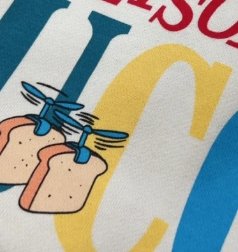When it comes to screen printing, the choice of ink can significantly impact the quality, durability, and appeal of your final product. Among the various types of inks available, plastisol inks olive green stand out for their versatility and superior characteristics. This article will explore the key benefits of using plastisol inks olive green for screen printing, touching on various aspects that make them an excellent choice for professionals and hobbyists alike.
Durability and Longevity
Plastisol inks olive green are renowned for their durability and longevity. Unlike some other types of inks, plastisol inks do not fade easily and maintain their vibrancy over time. This makes them ideal for applications where the printed material will be exposed to the elements or frequent washing. When used on fabrics such as 95% polyester shirts, plastisol inks olive green provide a robust and long-lasting finish.
The formulation of plastisol inks ensures that they are resistant to cracking, peeling, and fading, even after numerous washes. This durability is crucial for businesses that produce apparel, promotional materials, or any products where consistent quality and appearance are essential. Moreover, the chemical stability of plastisol inks, as outlined in their Material Safety Data Sheets (MSDS), guarantees that they maintain their properties under various conditions.
Vibrant and Consistent Color
One of the most striking benefits of using plastisol inks olive green is the vibrant and consistent color they produce. Plastisol inks are known for their rich, opaque colors that stand out against various fabric backgrounds. The olive green hue, in particular, is a versatile color that can be used to create a range of designs and themes.
Unlike water-based inks, which can sometimes produce uneven or washed-out results, plastisol inks olive green deliver a consistent and bold color every time. This consistency is crucial for businesses that need to maintain brand integrity and ensure that their printed materials look identical across different batches. The color intensity and opacity of plastisol inks olive green also make them ideal for creating detailed and intricate designs.
Ease of Use and Application
Plastisol inks are relatively easy to use and apply, making them a favorite among screen printers. The ink is thick and viscous, which allows for precise control during the printing process. This means that even intricate designs can be printed with great accuracy and detail.
For those who are new to screen printing or looking for a user-friendly ink option, plastisol inks olive green are an excellent choice. The ink is easy to mix and can be applied using standard screen printing techniques. Kits such as plastisol inks kits from popular suppliers like Michaels make it even easier to get started with plastisol inks, providing everything you need to begin your screen printing projects.

Versatility Across Different Materials
Plastisol inks olive green are versatile and can be used on a wide range of materials. While they are particularly effective on polyester fabrics, such as 95% polyester shirts, they can also be used on cotton, nylon, and other synthetic blends. This versatility makes plastisol inks a go-to choice for businesses that produce a variety of printed products.
The adhesion properties of plastisol inks are exceptional, ensuring that they bond well with different fabrics and materials. This means that the ink is unlikely to crack or peel off, even when subjected to stress or wear and tear. The ability to use plastisol inks on a variety of substrates makes them a highly flexible and valuable tool for screen printers.
Environmental and Safety Considerations
While the environmental impact of any industrial process is an important consideration, plastisol inks have been designed to minimize their environmental footprint. The Material Safety Data Sheets (MSDS) for plastisol inks provide detailed information about their chemical composition and potential hazards. By following the safety guidelines outlined in these documents, users can minimize the risk of exposure and ensure safe handling and disposal.
It’s worth noting that many plastisol inks manufacturers are continuously working to develop more eco-friendly options. Advances in ink formulation have led to the development of low-VOC (Volatile Organic Compounds) and biodegradable plastisol inks. While these options may not be as widely available as traditional plastisol inks, they represent a step towards more sustainable screen printing practices.
Cost-Effectiveness
Another significant benefit of using plastisol inks olive green is their cost-effectiveness. Plastisol inks are generally more affordable than other types of inks, such as water-based or discharge inks. This makes them an excellent choice for businesses that need to produce a high volume of printed materials without breaking the bank.
The longevity and durability of plastisol inks also contribute to their cost-effectiveness. Since they do not fade or wear out easily, businesses can avoid the need for frequent reprints, which can be costly and time-consuming. Overall, the combination of affordability, durability, and versatility makes plastisol inks olive green a highly cost-effective choice for screen printing.

Conclusion
In conclusion, the key benefits of using plastisol inks olive green for screen printing are numerous. From their durability and longevity to their vibrant and consistent color, ease of use, versatility across different materials, and cost-effectiveness, plastisol inks offer a compelling range of advantages. Whether you are a professional screen printer or a hobbyist, incorporating plastisol inks olive green into your printing process can significantly enhance the quality and appeal of your final products.



